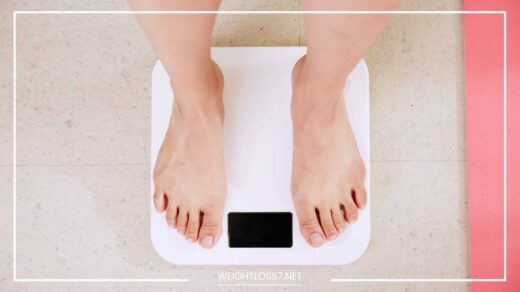How to Reduce Belly Fat: Proven Methods for a Slimmer Waistline

Reduce Belly Fat
Shedding the Spare Tire: A Comprehensive Guide to Reducing Belly Fat
Belly fat, also known as abdominal fat, can be a persistent concern for many. It not only affects our appearance but also poses significant health risks. While spot reduction (losing fat in one specific area) is a myth, there are effective strategies to reduce belly fat and improve your overall health.
This comprehensive guide will delve into the science behind belly fat, explore practical methods for shedding it, and provide tips for long-term success.
Understanding Belly Fat: The Two Types and Their Impact
There are two main types of belly fat, each with its own characteristics and health implications:
-
Subcutaneous fat: This lies just beneath the skin and is the jiggly fat you can pinch. While less dangerous than visceral fat, excessive subcutaneous fat can still contribute to health problems like sleep apnea and insulin resistance.
-
Visceral fat: This deeper layer of fat surrounds your organs and is linked to a much higher risk of chronic diseases. These diseases include heart disease, type 2 diabetes, certain cancers, and even Alzheimer’s disease. Visceral fat is metabolically active, meaning it releases hormones and inflammatory substances that can disrupt your body’s normal functioning.
Reducing both types of belly fat is crucial for improved health and a slimmer physique.
The Science Behind Belly Fat Accumulation: Unveiling the Culprits
Several factors contribute to belly fat accumulation. Here’s a closer look at the key players:
-
Diet: Excessive consumption of refined carbohydrates, added sugars, and unhealthy fats fuels belly fat storage. Sugary drinks, processed grains (white bread, pastries), and sugary snacks cause blood sugar spikes and insulin surges. Insulin promotes fat storage, particularly visceral fat.
-
Physical inactivity: A sedentary lifestyle leads to decreased calorie burning and can contribute to belly fat gain. Lack of exercise also reduces muscle mass, which lowers your metabolic rate and makes it harder to burn calories.
-
Genetics: Some people are genetically predisposed to store more fat around their midsection. However, genetics don’t dictate your destiny. Lifestyle choices significantly influence belly fat accumulation, even with a genetic predisposition.
-
Stress: Chronic stress elevates cortisol levels, a hormone that promotes belly fat storage. When stressed, your body is more likely to store fat, particularly visceral fat, as a potential energy source in a perceived “fight-or-flight” situation.
-
Sleep deprivation: When sleep-deprived, your body produces less leptin (a hormone that signals satiety) and more ghrelin (a hormone that stimulates hunger). This hormonal imbalance can lead to increased calorie intake and belly fat gain.
Diet: Your Arsenal for Battling Belly Fat
What you eat plays a central role in belly fat reduction. Here’s a detailed breakdown of dietary strategies to consider:
-
Embrace whole, unprocessed foods: Make these the foundation of your diet. Fruits, vegetables, whole grains, and lean protein sources are packed with nutrients and fiber. Fiber keeps you feeling fuller for longer, promotes gut health, and aids in blood sugar regulation – all factors that contribute to belly fat reduction.
-
Befriend complex carbohydrates and ditch refined carbs: Complex carbohydrates found in whole grains (brown rice, quinoa, oats), legumes (beans, lentils), and starchy vegetables (sweet potatoes, corn) provide sustained energy and don’t cause blood sugar spikes like refined carbohydrates. Refined carbohydrates found in white bread, pastries, sugary cereals, and processed snacks are quickly digested, leading to blood sugar crashes and cravings, potentially promoting belly fat storage.
-
Healthy fats are your allies, not enemies: Don’t be afraid of healthy fats like those found in avocados, nuts, seeds, and olive oil. These fats promote satiety, improve heart health, and may even aid in belly fat reduction by increasing feelings of fullness and reducing cravings. They can also help your body absorb fat-soluble vitamins.
-
Make protein a priority: Protein helps build and maintain muscle mass, which is crucial for boosting your metabolism and burning more calories throughout the day. Lean protein sources like chicken, fish, beans, lentils, and tofu are excellent choices.
-
Practice mindful eating: Pay close attention to your hunger and fullness cues. Eat slowly, savor your food, and avoid distractions like watching TV or scrolling through your phone while eating. This mindful approach allows you to recognize satiety cues and avoid overeating, a major contributor to belly fat gain.
-
Portion control is key: Use smaller plates (think salad plates instead of dinner plates) to visually reduce portion sizes and prevent overeating. Measure out servings or use portion-controlled containers to ensure you’re staying within your daily calorie needs for weight loss.
-
Stay hydrated: Drinking plenty of water helps you feel full, reduces calorie intake, and may even boost metabolism. Aim for eight glasses of water daily. You can also incorporate unsweetened green tea or water with lemon slices for added flavor and potential health benefits.
-
Limit sugary drinks and added sugars: Sugary drinks like sodas, juices, and commercially prepared coffee drinks are loaded with calories and can significantly contribute to belly fat gain. Opt for water, unsweetened tea, or black coffee instead. Be mindful of added sugars in processed foods like condiments, salad dressings, and store-bought sauces. Read food labels carefully and choose products with lower sugar content.
-
Consider incorporating a low-glycemic index (GI) diet: The glycemic index (GI) ranks carbohydrates based on their impact on blood sugar levels. Low-GI foods release glucose slowly, preventing blood sugar spikes and insulin surges. This can help regulate appetite and potentially reduce belly fat storage. Focus on whole grains, legumes, fruits with a lower GI (berries, apples), and non-starchy vegetables.
-
Explore intermittent fasting: Intermittent fasting involves cycling between periods of eating and fasting. While not for everyone, research suggests it may be effective for weight loss and belly fat reduction. There are various approaches to intermittent fasting, such as the 16/8 method (fasting for 16 hours and eating within an 8-hour window) or the 5:2 method (eating normally for 5 days and restricting calories on 2 non-consecutive days). Consult your doctor before starting any form of intermittent fasting.
Exercise: Your Powerful Partner in Shedding Belly Fat
Diet alone may not be enough for significant belly fat reduction. Exercise is a crucial partner in this endeavor. Here’s how to incorporate exercise effectively:
-
Engage in regular aerobic exercise: Aim for at least 150 minutes of moderate-intensity cardio or 75 minutes of vigorous-intensity cardio per week, as recommended by health guidelines. Moderate-intensity cardio includes brisk walking, swimming, cycling, and dancing. Vigorous-intensity cardio involves activities like running, jumping rope, and HIIT workouts (discussed below). Cardio helps burn overall body fat, including belly fat.
-
Don’t underestimate the power of strength training: Building muscle mass through strength training exercises (weightlifting, bodyweight exercises) boosts your metabolism and helps you burn more calories even at rest. This can significantly contribute to belly fat reduction. Focus on compound exercises that work multiple muscle groups at once, such as squats, lunges, push-ups, rows, and deadlifts.
-
High-Intensity Interval Training (HIIT) for a time-efficient approach: HIIT involves short bursts of intense exercise followed by recovery periods. These workouts can be a time-efficient way to burn belly fat and improve overall fitness. A typical HIIT workout might involve sprinting for 30 seconds followed by 30 seconds of walking or jogging, repeated for several cycles.
-
Find activities you enjoy: Consistency is key to achieving and maintaining results. Choose exercises you find fun and can stick with in the long run. Explore options like dancing, group fitness classes, swimming, hiking, biking, or team sports. Having fun with exercise makes it more likely you’ll stick with it.
Lifestyle Tweaks for Long-Term Belly Fat Reduction and Overall Well-Being
In addition to diet and exercise, consider these lifestyle changes for lasting success in reducing belly fat and improving your overall health:
-
Prioritize quality sleep: Aim for 7-8 hours of quality sleep each night. When sleep-deprived, your body produces more stress hormones that can lead to belly fat accumulation. Practice good sleep hygiene habits like establishing a regular sleep schedule, creating a relaxing bedtime routine, and ensuring a cool, dark, and quiet sleeping environment.
-
Manage stress effectively: Chronic stress can elevate cortisol levels, a hormone linked to increased belly fat storage. Find healthy ways to manage stress, such as yoga, meditation, deep breathing exercises, spending time in nature, or listening to calming music.
-
Limit alcohol consumption: Alcohol is high in calories and can contribute to belly fat gain. Moderate your alcohol intake or eliminate it completely for optimal results. If you do choose to drink alcohol, do so in moderation and opt for lower-calorie options like light beer or wine.
-
Quit smoking: Smoking is a major health risk and can contribute to belly fat accumulation. Quitting smoking not only improves your overall health but may also help you reduce belly fat. There are many resources available to help you quit smoking, such as nicotine replacement therapy, counseling, and support groups.
-
Strength of community: Surround yourself with supportive people who encourage healthy habits. Consider joining a weight loss or fitness group, finding an exercise buddy, or working with a registered dietitian for personalized guidance.
Remember: Consistency is Key and Patience is Your Ally
Losing belly fat takes time and dedication. Be patient, celebrate small wins, and don’t get discouraged by setbacks. Remember, progress, not perfection, is the key.
Every healthy choice you make, every workout you complete, brings you closer to your goal. Focus on the positive changes you’re making and the way you feel stronger and more energetic.
There will be bumps along the road, but with perseverance and a positive attitude, you can achieve lasting results and a healthier, happier you.
Here are some additional tips to help you stay motivated and consistent on your belly fat reduction journey:
-
Set realistic goals: Don’t aim for drastic weight loss overnight. Set SMART goals (Specific, Measurable, Achievable, Relevant, and Time-bound) that are achievable and track your progress. Celebrate reaching milestones, big or small, to stay motivated.
-
Focus on progress, not perfection: There will be days when you slip up. Don’t let one bad meal or missed workout derail your entire journey. Get back on track with your next meal or workout and focus on making healthy choices most of the time.
-
Find a support system: Surround yourself with people who support your health goals. This could be a friend, family member, workout buddy, or a registered dietitian. Having someone to hold you accountable and celebrate your successes can make a big difference.
-
Make healthy swaps: Don’t feel like you have to deprive yourself entirely. Find healthy alternatives to your favorite foods. For example, swap sugary snacks for fruits and nuts, replace white bread with whole-wheat bread, or opt for baked or grilled options instead of fried foods.
-
Cook more meals at home: This gives you more control over the ingredients and portion sizes. Experiment with healthy recipes that are delicious and satisfying.
-
Read food labels carefully: Be mindful of hidden sugars, unhealthy fats, and added sodium in processed foods. Choose products with lower calorie counts and simpler ingredient lists.
-
Don’t be afraid to seek professional help: If you’re struggling to lose belly fat on your own, consider consulting a registered dietitian or a certified personal trainer. They can provide personalized guidance and support to help you reach your goals.
The Importance of a Balanced Approach
While belly fat reduction is a primary focus, remember that overall health and well-being are crucial. Here’s how to maintain a balanced approach:
-
Enjoy a variety of healthy foods: Don’t restrict yourself to a limited set of foods. Aim for a balanced diet that includes all food groups in moderation. This helps ensure you’re getting the essential nutrients your body needs to function optimally.
-
Listen to your body: Pay attention to your hunger and fullness cues. Don’t force yourself to eat when you’re not hungry, and stop eating when you’re comfortably full.
-
Find activities you enjoy: Exercise shouldn’t feel like a chore. Find physical activities you genuinely enjoy, whether it’s dancing, swimming, playing a sport, or simply going for a brisk walk in nature.
-
Make healthy lifestyle changes sustainable: Focus on making changes you can integrate into your life for the long haul. Restrictive diets and excessive exercise routines are often unsustainable. Aim for gradual, sustainable changes that you can maintain for long-term success.
Final Word: A Sustainable Path to a Healthier You
Reducing belly fat requires a multifaceted approach. By combining a healthy diet, regular exercise, and positive lifestyle changes, you can achieve significant results and improve your overall health.
Remember, this is a journey, not a destination. Be patient, celebrate your progress, and enjoy the process of creating a healthier and happier you.
Disclaimer: This blog post provides general information and is not a substitute for professional medical advice. Consult with a healthcare professional before making significant changes to your diet or exercise routine.

















